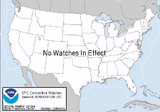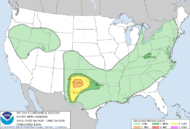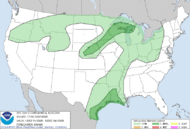Links to disaster related
sites for early prediction of DRO's
|

Convective Watches
|

Mesoscale Discussion
|

Today's Outlook
|

Tomorrow's Outlook
|
|
 Latest surface analysis
Latest surface analysis
|
 12-h forecast
12-h forecast
|
 24-h forecast
24-h forecast
|
 36-h forecast
36-h forecast
|
Note: WHENEVER A HURRICANE IS WITHIN 300 MILES OF LAND
IN THE NORTHERN WESTERN
HEMISPHERE, THE HURRICANE WATCH NET IS OPERATIONAL ON 14.325 &
14.275
MHz USB.
In addition, other common Red Cross frequencies
include 3.915 MHz, 7.280 MHz (LSB) and 147.42 (FM-Simplex). If 3.915 MHz is
unusable due to poor daylight propagation during an actual emergency, then look
for WA6ARC to be on 7.280 MHz (+/- 5 kHz) during the day, and 3.915 MHz (+/- 5
kHz) from late afternoon to morning.
This is for ham radio operators with 'HF'
radios and ECRV drivers.
In the area of the
disaster the RTT team formerly DCO and COM will meet on 147.42 FM.
[Return to HOME Page]